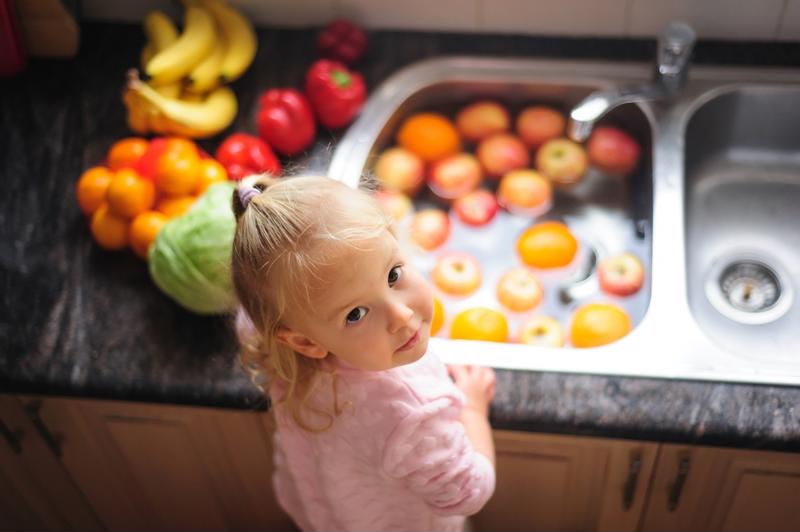There’s a lot of misinformation surrounding childhood nutrition these days. Food that is advertised as healthy for children is often anything but, while misguided views about weight have led some parents to starve their kids. What’s more, the quest to be the perfect parent often leaves moms more confused about what their child should eat than ever.
When it comes to toddler nutrition, you obviously want the best information guiding your decisions. Here are some basic facts about what growing children need to eat:
How does my toddler’s diet differ from a baby’s?
A child’s growth rate slows around the time of their first birthday, so appetite will naturally decrease. This makes things much more difficult: You’ll have to adjust portion sizes, and your kid will probably be more picky than before. Let’s start from the beginning:
When transitioning your baby off breast milk or formula, make sure to use whole milk and not low-fat or 2 percent milk. As the University of Michigan pointed out, kids under two years of age need fat for brain development. Reduced-fat milk is perfectly fine after age 2. According to the American Academy of Pediatrics, your toddler can also start eating grown-up food around this time.
Growing toddlers need about 1,000 to 1,400 calories per day, according to the KidsHealth. That’s good to keep in mind, but try not to get obsessed with how much your toddler eats. Forcing children to finish their plates may encourage overeating, and your toddler can develop a habit of ignoring hunger cues and eating beyond the point of fullness. Instead, focus on what’s on the plate. Variety in food choices is one of the basics of raising healthy children. The American Academy of Pediatrics recommends the following daily diet of five major food types for 2- to 3-year-olds:
- Grains, 3Â to 5Â ounces depending on age.
- Vegetables, 1Â to 1 1/2 cups.
- Fruits, 1 to 1 1/2 cups.
- Dairy and milk, 2Â cups.
- Protein such as meat and beans, 2Â to 4Â ounces.

How do I get my picky toddler to eat?
Picky eaters make it hard to introduce a varied diet and encourage healthy eating, but letting them have their way can affect their eating habits well into adolescence and adulthood. Take a calm but firm approach to getting your toddler to eat new things. Cook something different as often as you can, and don’t try to placate your toddler with something else if they refuse to try new foods. In fact, encourage your child to take two more bites. It might be a struggle, but healthy eating habits will develop over time.
How can I avoid unhealthy food?
First, let’s get some basic information out of the way: All food provides calories, and calories are an essential part of the human diet. Therefore, all food is technically good food in that it provides energy for your toddler to move around. In fact, it’s probably best to destroy any notions you have of good foods versus bad foods so that your toddler grows to have a healthy relationship with whatever he or she eats.

That said, your child needs other nutrients, and some foods provide more than others. Unfortunately, companies prey on your desire to give your toddler what’s conventionally deemed “healthy food” and use dubious tactics to get you to buy their products. Parents Magazine listed a series of common claims found on toddler food packages that make them seem more nutritious than they truly are:
- Made with whole grain. This statement doesn’t necessarily mean the product was made with no refined grains, just that whole grains make up a portion of it.
- 100% vitamin C. This sounds helpful, but the claim is almost unnecessary. Children can easily get their necessary amount of vitamin C by eating a few fruits. Plus, fruits have more fiber than juice and no added sugars.
- Reduced sugar. Instead of cutting back on sugar altogether, many “reduced” products just replace it with artificial sweeteners.
- Made with real fruit. Many times, the “fruit” involved is just fruit juice concentrate.
- All natural. This phrase doesn’t necessarily mean healthy; it just means the product was created without added colors or artificial flavors. It still can have a high sugar or salt content.
Toddlerhood is an important time for your child’s nutritional development. With diligence and a proper attitude, your little one will gain the nutrients he or she needs and develop a healthy relationship with food.
